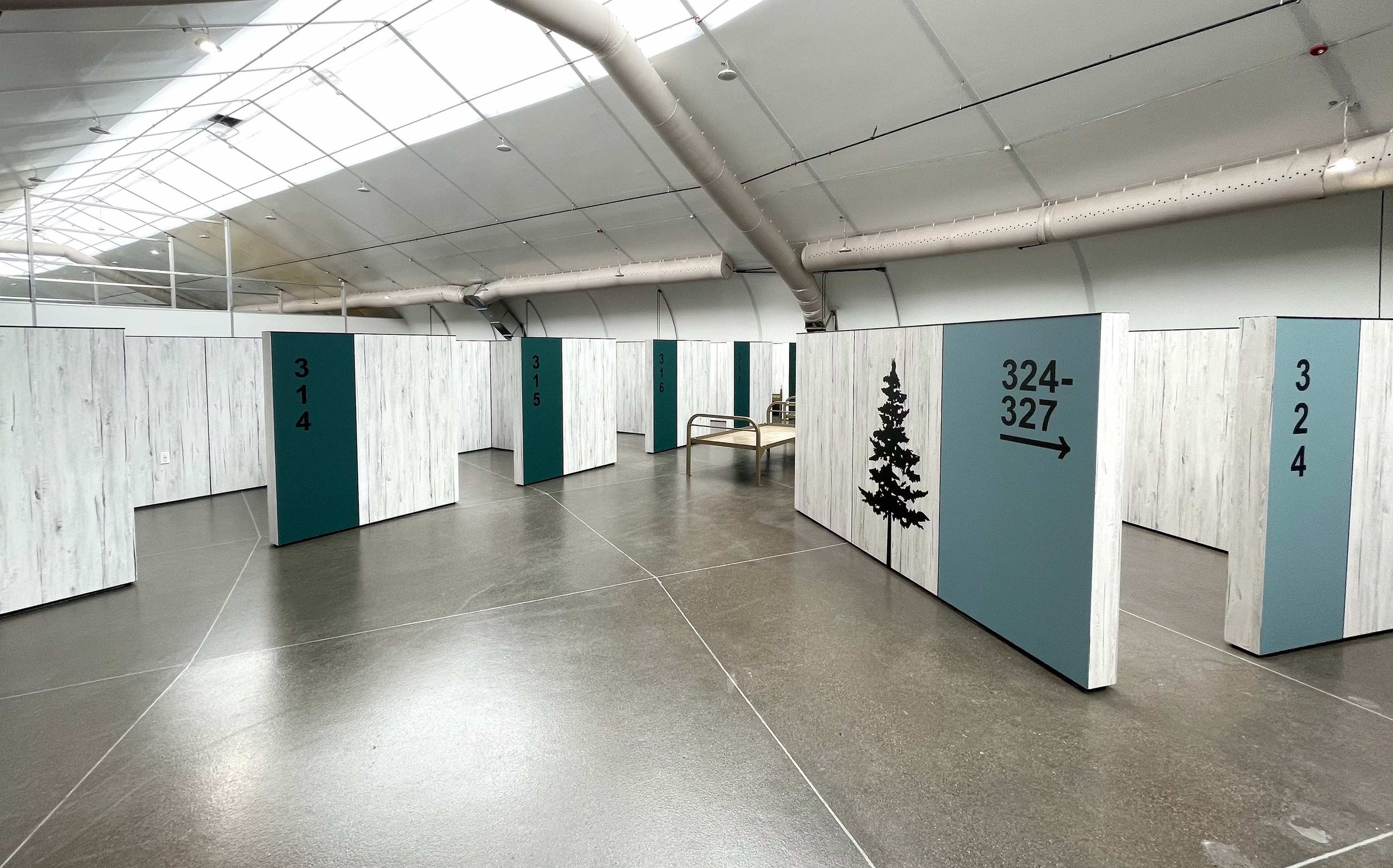Homeless Navigation Centers: A Pathway to Stability
Homeless navigation centers offer a one-stop-shop approach to homelessness by providing shelter and a wide range of services under one roof. They are designed to be low barrier so people can stabilize their lives and work towards permanent housing. More inclusive than traditional shelters, Navigation centers allow people with partners, pets and personal belongings and also allow guests to maintain relationships with people outside the center. Once inside they get intensive case management and connected to health care, substance abuse treatment and benefits. Navigation centers aren’t a solution to homelessness but they’re a step in the right direction. They provide shelter, services and support, an alternative to life on the streets.
Navigation centers aren’t constructed in a vacuum. Working together, non-profits, private entities and government are recognizing the need for taking action to help get people into more stable living situations. Combining architecture and practicality, Navigation centers are becoming seen as a first step to recovery and stability.
Continue reading more to gain more knowledge about navigation centers.
Accommodating Trauma with Design & Wrap Around Services
Given the high prevalence of trauma among the homeless population, many navigation centers are designed with trauma informed design (TID) principles. By creating safe and supportive spaces that prioritize the needs of people who have experienced trauma, TID can make a big difference. Natural light, a flexible layout and sensory considerations are all part of a healing environment. Read more about TID in navigation centers here.
Navigation Centers are not just shelters. They are comprehensive service providers, addressing the diverse needs of the homeless population. These services typically include case management, medical care, substance abuse treatment, job training and placement, and benefits assistance. Additional services may include legal aid, pet care, laundry facilities, and nutritious meals, ensuring that residents can access all the support they need.
Low Barrier & Person Centered Services
Navigation centers can be low barrier by minimizing entry requirements, such as allowing pets and personal belongings. This helps people feel able to ask for help. A person centered approach means services are tailored to the individual, building trust and empowering people to take control of their lives.
The end goal of navigation centers is to get people more ready to take the pathway into predictable living situations. By providing a safe and supportive environment and access to services, navigation center facilities can help residents overcome barriers and build a stable future.
Examples of navigation centers include the Reno CARES Campus in Nevada and the OHOH Navigation Center in Portland.
The Reno CARES Campus provides emergency shelter and support services including case management, housing navigation and mental health counseling. The project was a collaborative design effort with Reno’s chief building official. The 46,000 SF site was completed in under 60 days. Read more in the Wall Street Journal. Learn more about the development here on the Washoe, NV county website.
The OHOH Navigation Center: A Public-Private Partnership
The Oregon Harbor of Hope (OHOH) Navigation Center project in Portland’s Hope neighborhood is a great example of a public-private partnership addressing homelessness. This is what can happen when government, business and non-profits collaborate to solve complex social problems. Founded by developer Homer Williams, OHOH brought together a group of stakeholders including Columbia Sportswear CEO Tim Boyle who contributed to the construction of the center. The city of Portland provided the land and is still involved in the operation of the center. This partnership allowed for the rapid development of a facility that could house over 100 people who are homeless.
The Sprung Structures design also enabled the construction of a column-free interior, which gave the architects flexible interior space planning. This allowed for a unique interior buildout that provides residents with a better flow and general calmness. The finishes pair well with the mosaic skylight sections, allowing balanced natural light to illuminate the space. Sprung’s glazing options also allow the interior space to open into the exterior natural spaces, giving more hues of green on the interior from the exterior plants, while accentuating this element with the Sprung signature green exterior membrane. The OHOH Navigation Center provides essential on-site services, such as health and addiction treatment, to support residents effectively.
Congregate vs Non-Congregate Navigation Centers
The main difference between congregate and non-congregate Navigation Centers is the sleeping arrangements. Both types of Navigation Centers offer case management, mental health support, job training, and housing placement services. The choice between congregate and non-congregate Centers often depends on funding, community preference, and the needs of the target population.
Pre-engineered and pre manufactured modular buildings
Pre-engineered buildings (PEBs) offer a compelling option for constructing navigation centers. These structures are designed and manufactured off-site, which reduces construction time and costs. The pre engineered buildings and pre fabricated units are highly adaptable and can be customized to meet the specific needs of a navigation center. Additionally, some pre-engineered building manufactures have designed their buildings to be disassembled and relocated, making them adaptable for changing needs and reuse in different locations.
Building a homeless navigation center is a complex undertaking that requires careful planning, resources, and community support.
While the concept might seem straightforward, there are numerous challenges that involve funding, community opposition, land use, permitting, operations and permitting. Choosing a partner in the process that has experience working with various government agencies, building departments and manufacturers will expedite your project and respect your budget.
Navigate a Better Future
RPM Team operates as both a consultant for housing programs and a turnkey design firm involved in developing and constructing homeless Navigation Centers. Specializing in pre-engineered and prefabricated structures, we deploy teams faster than traditional EPC firms while remaining an economical option for planning, designing, and constructing prefabricated modular buildings.
Inquire about our free cost estimations for projects in the form below.








